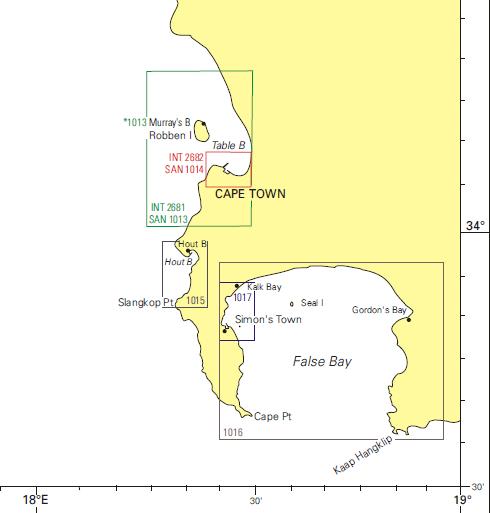For Tony’s birthday in June we spent a Sunday morning at the Two Oceans Aquarium at the Waterfront, diving in the I&J Predator Exhibit and in the Kelp Forest Exhibit. These were two of the best dives I’ve ever done. You need an Open Water or equivalent qualification for the predator tank, though I think you can do a (expensive?) DSD there too. For the kelp forest you need an Advanced qualification, as even though it’s only 6 metres deep, it’s very surgy.
On both these dives, you are on view to the public. It’s fun to wave at the kids through the windows of the displays. They are very excited to see real live SCUBA DIVERS in the water with all the fish. Needless to say, the scuba divers were very excited to be there!
Youtube videos for both dives can be found here.
Kelp Forest Exhibit
We started in the kelp forest – you wind your way up to the roof of the aquarium and drop into the water off a small wooden platform. This exhibit completely is open to the air, since it’s comprised of vegetation and sea creatures found in Cape waters, and because kelp loves sunlight. Kelp also likes water movement, so there are a variety of devices to keep the water moving – dump buckets, a plunger, and some pumps. This makes it quite choppy on the surface and quite surgy below. (Fascinating fact: since kelp cleans the waste products – such as ammonia – out of the seawater by filtering it, a lot of the aquarium’s water is passed through the kelp tank on its way to other exhibits.)
The exhibit has live kelp that is actually growing, which is quite an achievement, but you’re not supposed to hang onto it the way I sometimes do in the open ocean! The tank is packed to the brim with white steenbras (my absolute favourite), red stumpnose, galjoen, zebra, roman, shysharks, fransmadam, and even a gully shark if you can spot him. The fish are huge, many of them much larger than any I’ve seen in the ocean. I was extremely fortunate to be allowed to feed them – I was given a small bag of squid pieces and sardines, and the fish gathered around me as I knelt on the bottom. It was wonderful, so busy and colourful. They weren’t shy, bumping into my legs and BCD once they’d realised I had lunch with me. There’s a hilarious finger-biting episode at around 2:45 minutes in this video:
[youtube=http://www.youtube.com/watch?v=kePTwljhsyo&w=540]
The water is cold, and the tank isn’t actually very big. There are nice swim throughs between the rocks (made of fibreglass) and the kelp. The visibility isn’t perfect as the water is so highly aerated, and there are little bubbles of air everywhere. But it’s a thrilling dive and a very rare opportunity to get so close to so many beautiful fish.
Dive date: 6 June 2010
Air temperature: 18 degrees
Water temperature: 14 degrees
Maximum depth: 5.7 metres
Visibility: 10 metres
Dive duration: 27 minutes
I&J Predator Exhibit
The second dive we did was in the predator tank, which is a lot warmer than the kelp forest. On this dive, the Divemaster was armed with a piece of broomstick to “guide” the sharks away if they were to bother us. There are five ragged toothed sharks in the exhibit, none more than two and a half metres long. I think they’re all female. They cruise round and round in circles, looking completely awesome. I spent a long time just sitting on the floor of the tank watching them.
The other magnificent inhabitants of this tank are the sting rays. There’s Olive, a giant (and I mean GIANT) short-tailed sting ray like we see at Long Beach and Miller’s Point in summer, and a whole host of small (the sort of size that makes you want to take them home as pets) devil rays. Tony spent a significant part of the dive (while I was sitting watching sharks) chasing tiny rays around with his camera set on video.
In the corner of the tank we met the loggerhead turtle. She was lying next to a water vent, with her head in the corner. I was allowed to touch her on her neck (it felt really soft, and I felt lucky). I wasn’t convinced that she was a happy girl – she looked kind of depressed. Our DM said she gets more active when the water temperature increases, and sure enough I saw her swimming happily past the glass in the predator tank two weeks ago, when I went for my Saturday morning training at the aquarium.
The tank also contains musselcrackers, garrick, yellowtail, and (at the moment, but not when we dived in it) the remains of a sardine baitball.
The only moment when I got a bit of a fright was when we were surfacing against the rocks in the middle of the tank, and I omitted to look where I was going: straight into the path of a raggie. And sharks don’t generally get out of the way! Fortunately our DM had seen me behaving like a space cadet and “guided” the shark off to the side (since I wasn’t able to interrupt my ascent quickly enough).
Dive date: 6 June 2010
Air temperature: 16 degrees
Water temperature: 18 degrees
Maximum depth: 5 metres
Visibility: 25 metres
Dive duration: 35 minutes












